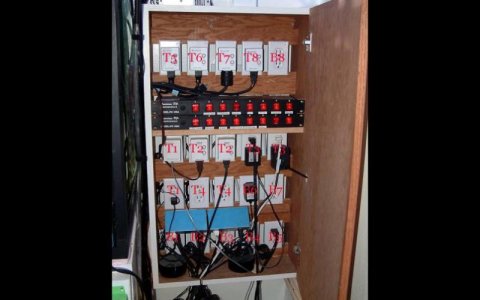shellsea
Member
I have a display tank on one side of an interior wall and my control board with Energy Bars and a 8 DJ switch on the other side.
Currently I have a hole in the wall and extension cords running through it to other side. I understand this is not to code and needs to be in conduit.
I am planning on installing an electric panel similar to what Marc Lev did on his site MelsReef . A bank of 24 total outlets behind the tank. 16 going through the wall in conduit and then plugged in to 2 Energy Bars 832. 8 in a separate conduit (if needed to comply w/ 60% open space) going to DJ switch.
My intent is to use romex from outlet, through the conduit then put a male plug on opposite wall side to plug in directly to the 832's and the DJ box.
The 832's and the DJ bar will be plugged into dedicated 20 amp GFCI outlets.
When assembled, but before install, I intend to have an electrician look at it but I want to reduce his time as much as possible.
My first question is does this sound safe?
Should I use 15 or 20 volt outlets?
Wire size?
Do the outlets also need to be GFCI if I have that down the line?
What type of plug would be best?
Any other thoughts?
Thanks in advance.
Currently I have a hole in the wall and extension cords running through it to other side. I understand this is not to code and needs to be in conduit.
I am planning on installing an electric panel similar to what Marc Lev did on his site MelsReef . A bank of 24 total outlets behind the tank. 16 going through the wall in conduit and then plugged in to 2 Energy Bars 832. 8 in a separate conduit (if needed to comply w/ 60% open space) going to DJ switch.
My intent is to use romex from outlet, through the conduit then put a male plug on opposite wall side to plug in directly to the 832's and the DJ box.
The 832's and the DJ bar will be plugged into dedicated 20 amp GFCI outlets.
When assembled, but before install, I intend to have an electrician look at it but I want to reduce his time as much as possible.
My first question is does this sound safe?
Should I use 15 or 20 volt outlets?
Wire size?
Do the outlets also need to be GFCI if I have that down the line?
What type of plug would be best?
Any other thoughts?
Thanks in advance.

